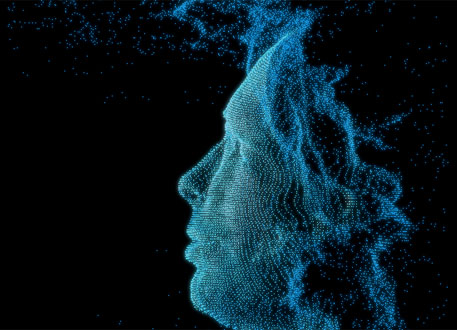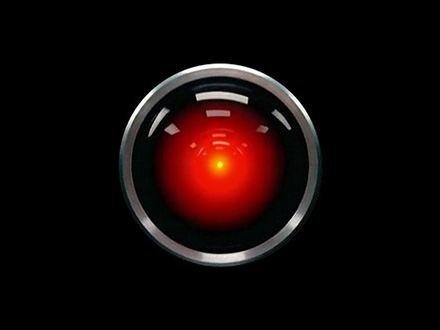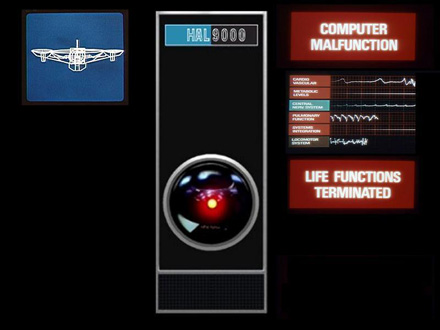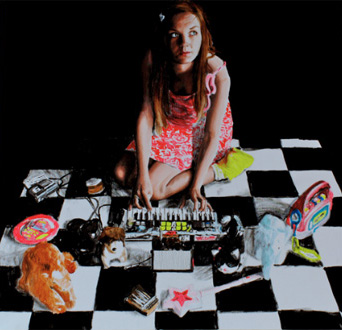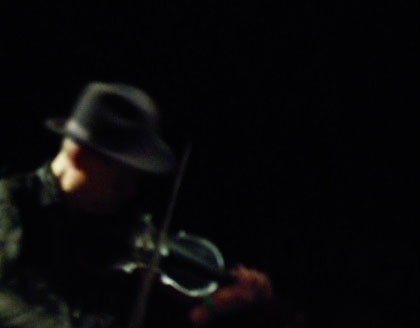
“Let’s face it, if we had to get permission from everyone on UbuWeb, there would be no UbuWeb.”
www.ubu.com, FAQ
“Watching films on a monitor is like listening to an opera via the phone”
Ladislav Galeta
The last couple of days I have been following the discussions on the FRAMEWORKS mailing list with great interest, as there has risen quite a bit of controversy over Ubuweb, and more specifically over the filmwork that has been made available via this site. The policy of Ubuweb is simple, but controversial: they take sound- and videofiles of avant-gardework wherever they find it on the net – be it via Karagarga, Greylodge or other (pirate) resources, put it on their own servers and make it available via ubu.com, for free. However, according to their mission statement, they only put stuff online that is out of print or “absurdly priced or insanely hard to procure” (that’s already discussable). No permission is asked, but “should an artist find their material posted on UbuWeb without permission and wants it removed”, they remove the link. In the past some filmmakers have done this: Bruce Conner, for example, who has recently, for some reason, withdrawn his influential films from distribution altogether, which also means he took his prints from official film distributors such as Canyon. All the links to Peter Kubelka’s work have been removed as well, because he does not want any of his films ever to be transferred to any other media but film, analogue or digital, tape or file. As he says in a videoclip on Jonas’ Mekas’ website: he wants his films to “die” with the technology. All these filmmakers have ended up in the “hall of shame” of Ubuweb, and for many people that was a step too far (I had my reservations about that as well, as I wrote earlier, after seeing a talk by Ubu headmaster Kenneth Goldsmith). Not coincidentally, this “hall of shame” seems to be taken off the site just a few days after the discussions on the mailing list started.
Some notes. Tony Conrad (btw: ‘Beyond the Dream Syndicate, Tony Conrad and the Arts after Cage’ by Branden W. Joseph just came out, a must-read for those interested in the work of this bon-vivant artist and his milieu) writes about some fundamental problems with Ubuweb on the FRAMEWORKS list, as he explains why he asked his work to be taken offline:
“Of course, the UBU approach described here is at best questionable. But the UBU shit list treatment goes further, to being corrupt and mean spirited. There are no explanations, no appeals—only (it appears) Kenneth Goldsmaith (who?) spewing, when he isn’t ‘appropriating.’
The soundtrack, and soundtrack ONLY, for my film ‘The Flicker,’ turned up on this site, and I had already discussed and rejected the dissociating of sound and image in this work with Lee Renaldo (of Sonic Youth, sd) and others, in reference to their proposals to use the visual part of ‘The Flicker’ in live music performance. I had also rejected a Table of the Elements (who re-released Tony’s early sound work, such as the magnificent box ‘Early Minimalism: Volume One’ and ‘Outside The Dream Syndicate’, a collaborative project with with Faust, sd) offer to release the track as a CD. I felt that (1) the sound and image were conceptually integral (in ways I won’t go into here), (2) the film had been adopted as iconic in reference to the category of “structural” film, and should retain its integriy within that guise, and (3) questions of quality and my own artistic prerogatives prevented me from approving this rudely uninvited appropriation.
In actuality, I personally have a great deal of sympathy for and interest in the free dissemination of video and film works. For instance, I am the principal contributor to a project of the European Union called ‘Oasis’, based at ZKM in Karlsruhe, which seeks eventually to provide study copies of works online. And (prior to this contretemps with UBU) I would have hoped eventually to release all of my work this way, or in some other readily transmissable form. There’s also the tsunami of YouTube just off shore! But there needs to be a certain gentlepersonly code of conduct that can circulate within such efforts, to replace the failing system of intellectual property law. UBU, in this respect, is a disgrace to the field, and not least so in its (not really) laughable “hall of shame.”
Of course, “ubu” is as “ubu” does; Jarry (Alfred Jarry, the author of ‘Ubu Roi’, who also coined the term ‘merdre’) may have spewed crap, but he did not attempt character assassination, even tho he carried a rifle around with him.”
In a later comment he adds:
“In spite of national and other funding that has supported many film artists, the works of the independent cinema are overwhelmingly the willful product of individual effort. These works belong in the ‘public sphere’ only to the degree that their owners wish so; this society has been constructed around an ethos of individual ownership, and this needs to be respected, even in so chaotic a cultural scene as independent media.
Nobody is saying that some guy’s collection of beer cans SHOULD BE MADE ACCESSIBLE to the public at large. The independent films belong to the filmmakers, and it was with this in mind that the coop system, from its founding moment, was encouraged to protect any financial interest that the work represented. Similarly, the ‘art world’ (institutionally speaking) is in effect a systemic recognition that art is a part (and product) of the market system, simply and wholly. We could debate the soundness of this structural condition, but that is the foundation of the society that has produced the modern western world.
For example, take inheritance. Some people may complain about how heirs control works that should be controlled by cultural interests. There has been a debate about Jack Smith’s legacy, for instance. This debate is misplaced; if the inheritance system is to be looked at critically, the gaze should turn first to wealth, and the system of family control of the huge assets that rule our social order, and not to the meager leavings of dead artists.
It may have been wise to have circulated more widely the argument that intellectual property itself is not the chief source of return for an artist (as the music industry has finally begun to recognize!), and that making your work widely available is a strategy leading to greaterreturn than rentals on demand. On the other hand, work that has circulated within the ‘art world’ has been supported by the promotional machinery of that scene, making high rental fees pay off in increased desirability (at least in the short run). The ‘art world’ has also generated a bi-level distribution system, in which informal exchanges and promotional releases circulate freely, while the “actual” work remains ‘tightly controlled.’
This informal circulation of ‘illicit’ copies has been the only access, for many, to work that has been chiefly the product of what Diana Crane considers an ‘urban culture.’ If you want to see these works, you need to go to New York, or London…. UBU, as an expression of the new construction of a widely disseminated online ‘urban culture’ is premature — or as they used to say in socialist Eastern Europe, ‘comes too early.’ It forces issues onto the cultural agenda that should be approached far more broadly, in terms of property ownership at large.
In proposing Oasis, a research archive for general access that is to be much along the lines of UBU, Woody Vasulka pointed out that floating work among multiple institutional databases makes it in effect indestructible, and thus positions it within the larger circle of the extended canon (unlike other important work — such as my brother Dan’s singular and remarkable film ‘Circles,’ which exists in one never-screened print at the NY Filmmakers’ Cooperative). ZKM, in Karlsruhe, has had difficulty effectuating Woody’s plan, largely because of their problems in obtaining clear and explicit permission from the makers (to digitize, and in what form, and to circulate, but how widely, etc. etc.). UBU overwhelms this proper proprietary obstacle by ignoring it. Is that the way to go? For works that are in the ‘public domain’ yes; for personal property, and to squeeze the issue with the circulation to ‘the mob’ of a public listing of the artists who have any reservations.”
There’s several issues here, apart from the methods and rhetoric of the Ubu people, which you might or might not find offensive. First of all there’s the issue of “quality” here, something that is difficult to pin down, especially in the light of changing viewer’s behaviour and expectations. Where’s the value in experiencing the low-quality, pebbly, versions of the films on Ubu? To paraphrase David Lynch (from a fake iPhone commercial): “It’s such a sadness that you think you’ve seen a film on your fuckin’ telephone. Get real!”. But Ubu attempts to address the poor quality of its reproductions. From the website: “We realize that the films we are presenting are of poor quality. It’s not a bad thing; in fact, the best thing that can happen is that seeing a crummy shockwave file will make you want to make a trip to New York to the Anthology Film Archives or the Lux Cinema in London (or other places around the world showing similar fare). Next best case scenario will be that you will be enticed to purchase a high quality DVD from the noble folks trying to get these works out into the world. Believe me, they’re not doing it for the money.” And in a recent interview, Goldsmith reiterates this position: “There is nothing that will replace sitting in a dark theater on a huge 35mm screen with a group of warm like-minded bodies enjoying a beautiful film. But unfortunately most of us don’t live anywhere near the place–the three places in the world where those things happen to be shown regularly. So this is not meant to be the real thing because it’s not the real thing–it’s a snapshot–it’s a poor substitution. And we like the idea that the film quality is bad because it’s going to make you want to go out and see the thing for real”. On the mailing list Tom Whitemore writes: “If Mahler had intended for his work to be heard on AM radio, he would have lived in the 1950’s. There is one very simple argument against UBUweb and anything like it – the work is seen through a dirty dusty dark lens. Experimental film is a visual medium. Lack of respect for that is simply lack of respect. Some folks are going to do it. I watched a David Rimmer film once on UBUweb, and that was enough for me. Make a xerox copy of a pizza. No matter how good that pizza was, the copy is going to taste pretty bad.”
In an interview published in the book ‘The Cinematic Reader’, filmmaker Ernie Gehr, who actually didn’t ask Ubu to take his work off the site, explains why the context of is so important in experiencing a movie, especially when it comes to certain practices in ‘experimental film’:
“My Impulse upon hearing that some of my films were available on Ubu.com was to get in touch with them and ask them to take them offline. It was too painful, seeing my films in such a state. Someone who contributes to ubu.com had told me that if I contacted them, they would take the clips off immediately. But the representation of my work is so poor that I felt I had better leave it, before somebody puts clips online which look a bit more representative, because that would be even more painful. For certain kinds of information, like getting the idea behind the film, they might be useful. But if you would like to get the experience of my films, I would advise you not to look at those oline representations. I work on a certain scale. Also, in my studio, I project what I am working on, to see how it works. To see it on a computer monitor is quite something else. I am interested in the experience of the work, not necessarily in the outline, or the idea behind it. Otherwise I could have just put the idea on a piece of paper, it’s cheaper, and it takes less time to consume. You should look at a film in time.”
Jack Sergeant, author of several books on transgressive and beat cinema, and a regular curator and chronicler of “underground” cinema:
“I have had numerous students (in film and in media) who quite simply do not go to the cinema – not just independent film but even brain-in-neutral-candy-floss mainstream film – when questioned the cinema is not a priority because they can watch works online (or they just don’t bother to see something ‘weird’) and in their understanding online viewing is ok because it is ‘the same thing’.
This notion of watching online streaming, dvd watching, and going to the cinema as being the same has emerged because of our cultural emphasis on cinema as simply another form of story telling, the visual and aural nature of the experience is believed so often to be secondary to the narrative.
Another issue is in the relationship between so called technological innovation and the experience of pleasure. With the introduction of the MP3 player music became simply a ‘personal soundtrack to daily life’ (is this an advertising slogan?), endlessly streamed through headphones. But the pleasures of music are not just aural but also physical, you need to feel the sound in your body, not simply hear it in your ears, even on an individual level many people now seem unaware that they are not really experiencing music fully, but you cannot explain that to people who think the ipod has enabled them to become interesting because the sound delivery device has a number of different colour matt-plastic covers! The technological medium of delivery is now valued by some more highly than the actually music. The notion of personal pleasure also removes the collective experience of music; seeing a loud band, dancing at a rave, hearing an opera, whatever your interest there is a collective experience which the technology negates when it becomes simply personal.
Likewise with film, no doubt people here on frameworks get annoyed with the burned smell of crisco on popcorn and the loud whispers of the audience in a cinema, but the collective experience of watching a film is one of the pleasures the cinema, the shared experience of wonder, or excitement, of emotion, is what defines cinema. Quite simply you can’t have that much fun watching a computer screen.”
But then this extends even further than the quality vs availability discussion, that has been goin’ on for quite a while. Ubuweb might be helping to raise an awareness of otherwise marginalized culture and is for many people a valuable resource (I use it to preview stuff when we’re composing film programs). By making everything available and downloadable there’s a visibility that might lead to an increase of popularity and renown of the artists on the site, and thus increase sales. Or doesn’t it? Visual artist Lisa Oppenheim writes: “After all, from an economic perspective, anything that broadens an artist’s ‘market’ is arguably a good idea”. It might be interesting to check with film distributors if rentals have actually increased, in order to feed the many debates out there on the complexity the relationship between file sharing and sales and the overall earnings of cultural producers. But also: is an equality of access really a good thing, Sergeant asks, doesn’t this mean they are simply perceived as equally disposable? Where’s the balance in broadening acces and lowering quality (expectations)? where lie the priorities?
Bruce Mcpherson, who published books on Deren, Brakhage, Schneemann and others makes a point:
“Insofar as we are all being forced to recognize the Avenue of Bytes as the necessary and expedient way to disperse information about the existence of your (or any) art, I suggest that filmmakers need to make a better practice of giving a little in order to get a lot more.
Specifically, why not offer up a portion of your films, for free, to sites like ubuweb or youtube or whatever, and include information within the “teaser” about where to find/view/acquire your films in the form you feel is proper? Give half a film, or a quarter, or moiety, and you will create demand for the other half, or three quarters. If you tell ubuweb what you want to give them, I feel certain they will be willing to work with you.
You SHOULD control how your art is perceived. But you MUST be out THERE, in the thick of the cultural surround, and battle on your own terms for as much attention as you can possibly obtain. By all means, you should decide how much to give, how much to ask for, but you must be seen to want to be seen.”
Archivist Richard Prelinger:
“Experimental work is much too hard to see. In many places it’s a once-a-year, twice-a-year experience. Outside of a few major centers, it’s really difficult to see work that doesn’t have well-known names attached.
The chasm between experimental work and its existing audiences is deep. The chasm between work and new audiences is even deeper. Here and there artificial scarcity creates value, but most often it results in marginalizing important work that could transform more sensibilities if only it could be seen.
Some may vehemently disagree, but experimental work needs fans. It needs to reach receptive people who would never know to rent a print from the venerable distributors that have worked so hard to keep this culture alive. There isn’t a single way to help moving image works get to potential viewers. All are part of an ecosystem of strategies, and most are valid for one reason or another.
Today there are more images and sounds in the culture than ever before. Art books helped keep painting in the cultural foreground. You know the drill. We need a host of ways to keep good work from disappearing in the noise.
I defend Tony’s right to know where his work is going and steer it in a direction he feels appropriate. But the times may not favor his or any artist’s exclusive control. For Tony, I suspect there is value in maintaining a measure of control and scarcity. I’d only say that the more people that get to see his work and appreciate his career, the value of the billable events that happen around his work will increase. This has been our story.”
Tony’s answer:
“I agree of course: your point is that STRATEGICALLY speaking it makes sense to disseminate one’s work as widely a possible. My point remains: the decision to PURSUE this strategem, or not to do so, should belong to the owner (maker) of the work.”
Furthermore, the notion of the “gift economy” might have its cultural value and “intellectual property” as we know it might come to an end, but it’s clear for many filmmakers that we have to devise sustainable income sources beyond the current copyright regimes. After all, as Thomas Mccormack writes, refering to Lewis Hyde’s ‘the Gift’: “the desire for artists to be able to make money is tied up with the idea that artists should have complete and utter control over their work. These things are not actually mutually inclusive. Under the system of patronage, for example, it was not the case that making a living being an artist meant being proprietary about your work. (…) It’s hard for artists to make a decent living (as many Frameworkers are well aware), but criticizing copyright laws is not an attack on artists, it is an attack on the system, one that currently facilitates making a living (or not), but one that could, and most likely will in some way (possibly for the worse), change.
It seems to be taken for granted by many people on this thread that artists should have complete control over everything they do and make, forever and ever. I’d like to suggest that it is possible that making art is actually an act of giving over a little bit of oneself (or one’s property, work, etc.) to the greater community, and inherent in that act is generosity and a sacrifice of control. While I agree that living artists should be able, to the extent that they wish to, to control how their work is seen, I believe that eventually we have to consider the possibility that art is a community-owned object that is free for everyone to do with it what they wish. For example, people, I think, generally would not be pleased if the great-great-ad-finitum-grandson of Homer began getting very litigious over the Odyssey, because with works of antiquity we all take for granted the community ownership. Clearly there’s no exact point where we can say that a work passes from the individual to the community, but I think the author’s death would be a pretty good time, if we had to assign one. I think many peoples strong feelings about artists maintaining control over how their work is seen, are really sublimated hostilities pertaining to how difficult it is to be an artist in modern society. It makes sense that because we live in a community that often seems hostile to art, artists often become hostile to that community.
I can’t defend the fact that ubu makes it difficult for many people who are trying to do good things, but I can say that the degradation of quality is just something that happens, as is the greater access it allows. Many people don’t believe you “can read” poetry in translation – but you can certainly read something, have some experience, etc. Eventually, I don’t believe artists should have the right to prevent people from translating their works, whatever form (degradation) that translation might take. Without translation (almost always degradation) we would have no history that could be accessed by anyone but the highly specialized. Without these various forms of degradation, we would live in a world of intellectual poverty. Just one example – Ernest Hemingway, who spoke no Russian, could not have Leo Tolstoy, who wrote no English. This is what I mean by community. I don’t think Leo Tolstoy, had he wanted to, should have had the right to prevent translation, at least after he passed away. It would rob the community of too much; regardless of the fact that translation probably robs Tolstoy’s work of some of its power. People are often hostile to this kind of thinking, because, again, they relate it to the fact that it is so hard to make money, and our current system puts so much weight on “control” and “rights” and gives artists so little respect. But I think, in fact, that when artists sacrifice this kind of “control,” it is the very thing that demands so much respect.
Figuring out how this will all work in an age where intellectual property laws are increasingly problematic will be interesting and, I’m sure, difficult. But, as these things are being figured out, I hope art-loving citizens like the Frameworkers don’t automatically support many bad fixed-ideas that are really symptoms of having to exist within the current system. I also hope forward-thinking people like ubuweb put more thought into working out systems that can benefit artists as well as the community, and stop being shameless and smug.”
So the real question might be, as one Frameworker notes: “does the economy of this kind of work really mean ubuweb’s ‘grab and post’ attitude is the only way such a comprehensive archive could come into existence? ”
To be continued…
Read the discussion here
Picture above: Tony Conrad @ No Fun Fest 2008. May 16 2008 at the Knitting Factory In NYC
